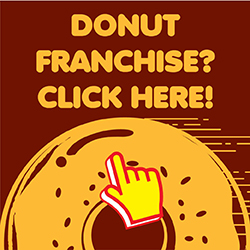For small-business owners and investors looking for franchising opportunities, knowing your numbers is essential for financial success. But many times owners simply look at their sales, subtract their expenses and scratch their heads when the profits are lower than expected.
That’s why it’s essential to dig a little deeper and understand the five key areas that generate profits for franchise businesses. An owner wrapped up in day-to-day operations needs to look more closely at the numbers. It’s the best way to make good decisions and get back in control so you’re running the business, not the other way round.
To show how these concepts fit together, let’s first look at your marketing and sales strategies. Every business would like to have more customers, but how does it attract good prospects and turn them into buyers? Are companies talking to enough people, or do they need to do more marketing? Are they converting those leads into actual transactions or do they need a fresh approach to selling?
Many entrepreneurs miss the important distinctions between marketing and sales, unless they drill down and analyze the situation more closely. By focusing on improving five key profit-generating areas–lead generation, conversion rate, average dollar sale, average number of transactions and profit margins–franchise owners can have a direct impact on the sales volume and overall profitability of their business.

Lead Generation
A lead is defined as someone who contacted the business or someone your business contacted. It could also be someone who walked through the front door of your store. That number might be 10 per month for a small accounting firm or 25,000 a month for a busy quick-service food franchise.
It is surprising how many businesses don’t know how many potential buyers they have. That makes it hard to determine the effectiveness of a marketing program. After all, the more quality prospects a franchise can attract through its marketing, the better its chances of closing more sales.
So how does your organization generate more leads and find higher-quality prospects? First, a company has to define its target buyer. Is the organization’s best prospect a consumer of a certain age or population segment? Does the company want to reach every household in the ZIP codes near its store? What type of business needs the company’s products or services? Once the franchise knows its ideal prospect, it can determine where to find them, using geography, demographics or some other criteria.
Next, an organization needs to think about its prospects’ interests and needs. How can a franchise make its marketing messages more appealing to them? What media–print, television, radio, online or mobile–will most likely reach them? And what about language? If a company has a growing number of Hispanic customers in its market, the company may want to market in Spanish as well as English.
Finally, many owners have continued to use marketing strategies that were successful in the 1990s or early 2000s. So a good question to ask is whether the organization needs to update its marketing strategy to reach its prospects in 2015? Thinking about these marketing issues is crucial for developing a more effective lead generation strategy.
Conversion Rate
Next consider the conversion rate: the number of leads who actually purchase a brand’s products or services. This is where the company turns lookers into buyers. It’s easy to determine the conversion rate: just take the number of leads and divide by the number of buyers.
Look at the conversion rate and think about how it can be increased. Perhaps the franchise needs to make its sales offer more appealing? For instance, can the company throw in an extra product or service to sweeten the deal? Remember that today’s buyers are very value conscious; the days of throwing money away on an impulse buy have largely vanished for most consumers.
However, consumers are looking for ways to improve their lives and save money. Businesses want to operate more efficiently and increase their own profits. Therefore, as a franchisee, your sales message needs to speak directly to those needs. Make sure prospects understand the value and the benefits of the offer. It’s not enough to have a product with a lot of fancy features. The company needs to be able to show prospects how its offer will benefit them. It may require providing more training for its sales force. Or it might be necessary to take a close look at the current offer to be sure it is still effective in motivating today’s consumers.
Number of Transactions
The third profit-generating key is the number of transactions. How many actual purchases did customers make during a given period? Let’s estimate there were 1,000 customers last month and 2,000 transactions. That means every customer made two purchases during that time frame. On the other hand, one might have the same number of customers, but only 1,000 transactions. In that case, increasing the number of transactions per customer would clearly generate more revenue for your business.
Many business studies have shown that it’s 10 times less expensive to get a customer to come back for a repeat purchase than to bring in a new customer for the first time. So if the number of transactions per customer is relatively low, your business may be missing out on a great sales opportunity.
Is the business giving its customers incentives to come back and complete another transaction? Is the organization calling or e-mailing them on a regular basis? Statistics show that companies should contact a customer at least every 90 days to reinforce that connection. Otherwise, when they next need your product or service, they may have forgotten about your business.
It’s a good idea to stay in regular communication with your customer base and remind them about all the things your business offers. Also look for ways to keep them engaged with your business. Think about the contests offered by many restaurant franchises–they provide a reason to come back again and again. Another good tactic for service businesses is to book a repeat appointment before the customer leaves. If the franchise is a hair salon, for instance, making an appointment after providing the service is an excellent way to generate return business. The next time a customer needs a trim, she doesn’t have to think about where to go because she already has an appointment.
Average Dollar Sale
Next, analyze your average dollar sale by summing up all the transactions for the day, week or month and divide by the number of dollars they generated. There are many ways to increase the average dollar sale, such as the classic McDonald’s offer, “Would you like some fries with that sandwich?” A consumer who says “yes” spends more money and the franchise’s average sale goes up. The same principle applies in the services sector as well. A tax preparation franchise, for example, may be able to offer other financial services for consumers or small-business owners during the year.







